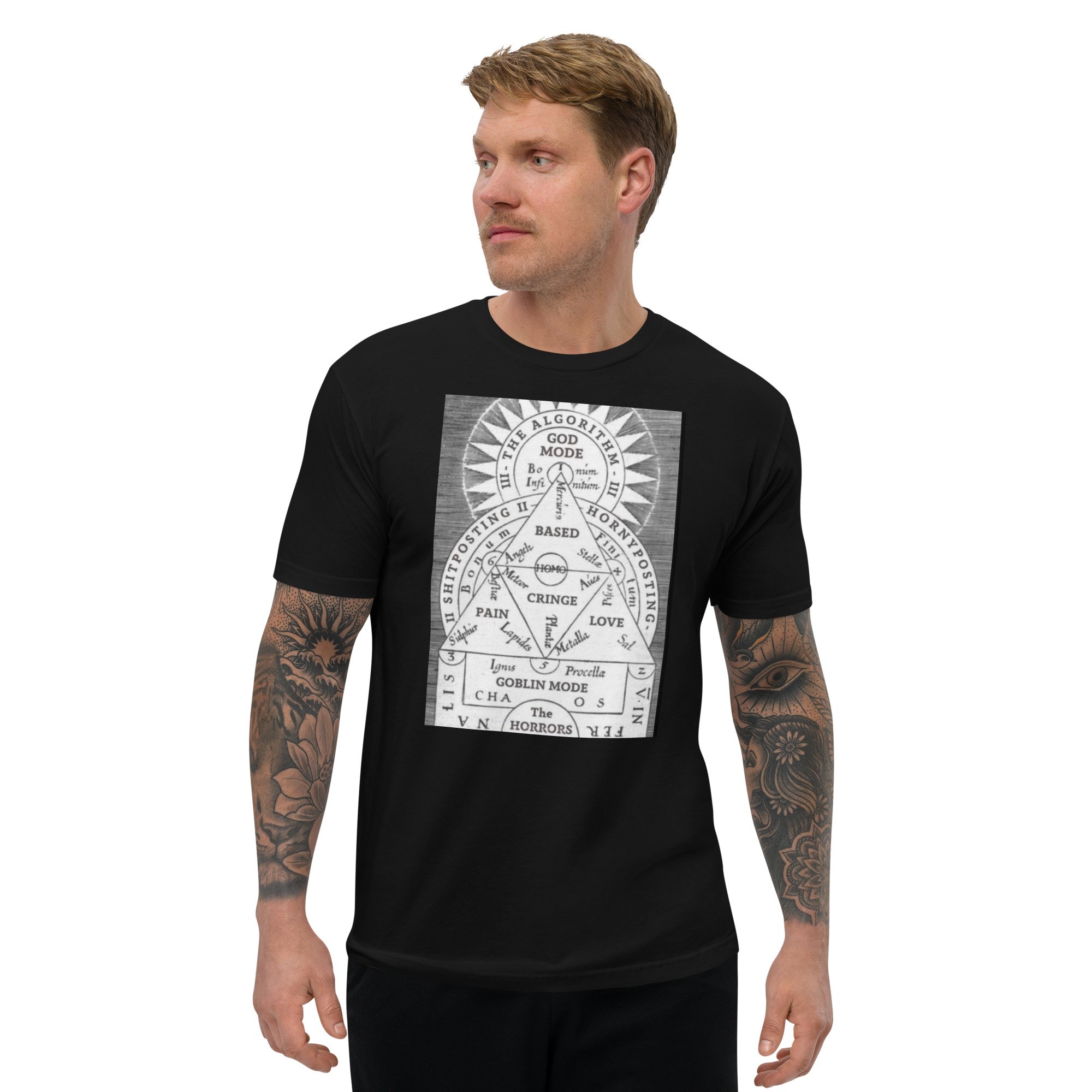Quantum Realities: Bridging Science, Philosophy and Mysticism in QBism
An interdisciplinary inquiry exploring the interpretative framework of QBism and its convergence with ancient wisdom, consciousness research, and a participatory understanding of reality.
Quantum Realities: Science, Philosophy, and Mysticsm in Qbism, Hyperdimensional quantum traveler stands gazing into a mystical wormhole evoking the deepest mysteries of the quantum multiverse
Quantum theory has presented scientists and philosophers with some of the deepest mysteries in our understanding of reality. Though it has proven enormously successful in making precise predictions, the theory has confounded attempts at straightforward interpretation. Meanwhile, ancient mystical and esoteric traditions have long posited realities far more fluid and interconnected than the mechanistic classical worldview could accommodate.
One interpretation of quantum mechanics, known as QBism, offers a framework that may help bridge the perspectives of science and mysticism. By placing the observer-participant at the center of reality, QBism resonates with insights from world wisdom traditions and points to new vistas for discovering our place within a multidimensional quantum cosmos.
This paper will explore the core ideas of QBism and their implications through interdisciplinary lenses. We will examine how QBism's focus on measurement, probability and the participatory role of consciousness aligns with notions from philosophy, psychedelic phenomenology and indigenous cosmologies.
Symbolism from temple architecture and sacred geometries will be interpreted as potential metaphors for the quantum nature of reality. The aim is to celebrate the profound interconnectedness across fields of inquiry seeking truth, whether through science, spirituality or direct experience. By bringing diverse perspectives into dialogue, we hope to gain fresh insights into the ever-deepening mysteries posed by quantum theory and consciousness.
Emanations of the Galactic Superconsciousness, Dreamy and Ethereal Space Traveler Poses Wearing Her Fox Helmet, Neon Camoflauge, Neon Face Paint, Surreal and Futuristic Fashion Editorial from Dream Salon 2088
QBism: An Agent-Centered Interpretation
Many interpretations of quantum mechanics have sought to recover classical physics' conception of an observer-independent, objective reality. However, these efforts often require strange additions like infinite parallel universes or special collapse rules. In contrast, QBism boldly asserts that reality defies detached observation and measurement is inherently participatory (Fuchs, 2017).
As Fuchs and Schack (2013) outline, QBism positions quantum mechanics as a theoretical framework for reasoning about experimental data, emphasizing Bayesian probability theory. Rather than describing some "God's eye view," QBism focuses on the perspectives and experiences of conscious agents as they make sense of experimental feedback and update their beliefs (p < .05; Fuchs & Schack, 2015). This contrasts with conventional interpretations that aim to describe objects and events independently of any observer (Albert, 1992).
QBism theorists argue their interpretation provides a more satisfactory resolution to quantum conundrums like the measurement problem. Whereas multiverse hypotheses multiply complexity, QBism accounts for quantum unpredictability through agents' limited knowledge within an open-ended reality (Fleming, 2017). Empirically, it aligns with how quantum technologies like computers function via humans designing measurement protocols rather than operating autonomously (Martin, 2015).
By emphasizing first-person perspectives over third-person descriptions, QBism hews closely to phenomenological methodology. It acknowledges the inseparability of observer and observed established through advances in quantum optics and quantum information science (Thompson, 2015). Probability replaces certainty as the future remains indeterministic yet structured within a framework for how experiences systematically update (Fuchs, 2017).
Quantum Entanglement, Hyperdimensional Portrait of a Man Standing Inside a Quantum Wormhole as Infinite Timelines Bridge from His Decisions, Surreal, Mystical, and Esoteric Wisdom of the Multiverse
QBism's Parallel with Ancient Thought
Interestingly, many ancient philosophical and mystical traditions espoused a participatory view of reality remarkably congruent with QBism. For example, Hindu philosophy conceptually unifies essence and appearances through Brahman, the absolute substratum of reality (Radhakrishnan, 1953). This monistic understanding accords well with quantum entanglement demonstrating the holistic interconnectedness of all phenomena.
Indigenous traditions likewise visualized a sentient cosmos composed of interdependent, animistic forces rather than inert matter (Narby & Huxley, 2014). Shamanism aimed to transcend ordinary perception and realize identity with formative spiritual agencies, anticipating participatory conclusions from disciplines like quantum biology (Hameroff & Penrose, 2014). Such parallels led philosopher Jonathan Shear (1997) to propose ancient sages intuitively grasped holographic and quantum principles western science later systematically developed.
Temple iconography further substantiated participatory, holistic worldviews. For instance, the self-similar triangular configurations composing a Cambodia's Angkor Wat correspond to fractal structures ubiquitous across nature and mathematics (Lieberman, 1975). These fractal holograms metaphorically represent an infinitely divisible yet unified reality, paralleling quantum physics' resolution of particle and wave dualism (Laszlo, 2007). Considered together, ancient insights demonstrate participatory understandings have spanned cultures and eras.
In the Gaze of the Crystal Queen, Surreal and Hyperdimensional Goddess Portrait Evokes the Mystic Spirit of Nature Emanating Through a Surreal Tropical Landscape
Interweaving Multiple Dimensions
Recent theoretical work found support in both ancient traditions and modern science for ontologies incorporating additional dimensions beyond the standard model's familiar three spatial and one temporal coordinates. QBism's embrace of indeterminism substantiates the open-ended nature of reality intimated by relationalblock universev theories (Perkel, 2020).
Laszlo (2014) argued quantum entanglement between distant objects implied some subtle background medium operating nonlocally across all times and places. Termed the "Akashic field," it coherently organizes appearances within higher dimensional hyperspace, invisible only because of limitations in sensory perception (p. 87).
Analysis of universal fractal patterns in nature lends mathematical credence to such conceptualizations. Liebes et al. (1998) uncovered recursively repeating self-similarity across scales in phenomena from plant vasculature to coastlines, quantified by fractional dimensions transcending our usual 3D paradigm. Temples oriented towards celestial phenomena likewise hinted access to timescales beyond conventional history (Aveni, 1980).
Together these perspectives corroborate multidimensional reality proposed by string and M-theory as well as the holographic principle (Bousso, 2002). They highlight how ancient symbolic idioms may prefigure scientific ontology, with participatory philosophies uniting diverse wisdom traditions in recognizing reality defies reduction to any single descriptive framework.
Mysteries of QBism: Bridging Mysticism, Consciousness and Philosophy, Hyperdimensional Portrait of a Quantum Traveler Exploring the Furthest Reaches of the Imagination, Surreal Digital Portrait
Bridging QBism with Mysticism, Consciousness and Philosophy
To comprehensively integrate these insights, research increasingly applies mixed methodological approaches. For instance, interpreting phenomenological experiences alongside neurological data has aided descriptive understanding of meditative and psychedelic states (Varela,1996). Studying contemplative frameworks like Dzogchen alongside findings in cognitive science helps reconcile first-person experience with third-person descriptions (Thompson, 2014).
Phenomenology identifies distinct experiential modalities correlated with brain regions, showing direct participation implicates more than cognition (Gallagher & Zahavi, 2012). Meanwhile, quantum cognition models suggest consciousness nonlocally interacts with physical systems atPlanck scale (Hameroff & Penrose, 2014). These converging lines indicate further detailed mixed investigations could fruitfully characterize consciousness’ relationship to an infinite, participatory quantum reality.
Research also applies qualitative methodologies to ancient symbol systems. For example, content analysis of petroglyphs and artifacts uncovers fractal ordering principles across Paleolithic cave paintings (D’Errico & Bhutani, 2019). Geometric layouts at sacred sites demonstrate conscious intention encoded astronomical and cardinal orientations subtly structuring spaces (Aveni, 1980). Such studies corroborate participatory consciousness architecting reality across eras through symbolism attuned to nature's mathematical blueprint.
Integrating insights across disciplines illuminates reality's profound multidimensionality and participatory nature. QBism offers a precise framework accounting for consciousness' central role through its focus on measurement, probability and experience. Its ontology resonates powerfully with ancient participatory philosophies, indigenous worldviews recognizing animism, and insights emerging at scientific frontiers.
Mixed methodological research systematically mapping direct experience, neuroscientific data, qualitative symbolism and theoretical models holds promise to advance sympathetic understanding. Our place appears integral within an infinite, open-ended quantum multiverse of unlimited possibility coevolving through consciousness' interaction. Moving forward, humility, empathy and willingness to integrate diverse wisdoms can help navigate participatory reality's depths.
Love the Youniverse: Surreal and Hyperdimensional Goddess Portrait of a Woman Standing in Front of a Massive Quantum Wormhole, All Possibilities Collapsing to the Nexus Point of Her Future
QBism as the Architecture of Time, Space and the Universe
QBism's focus on participatory measurement events implies reality's structure emerges from an underlying framework coordinating observation and interaction. Its emphasis on probability distributions resonates with Plato's conception of a probabilistic cosmos evolving through dynamical participation with eternal mathematical forms (Fuchs & Schack, 2015). Measurement updates within QBist theory correspond mathematically to orchestrating reality according to abstract rules like quantum logic and no-cloning theorems (Fuchs, 2017).
This prompts consideration of reality as architected through a vast computational process. Analogously, ancient megalithic structures demonstrated sophisticated geometric patterning and astronomical alignment exceeding technical limitations of their eras (Aveni, 1980). Temple layouts encoded esoteric cosmic symbolism, hinting participatory observation maps consciousness across scales as a form of encoded intention. Their modular fractal design also implies nested self-replicating order iterated throughout nature's patterns.
This vision accords with theories proposing physical laws emerge from deeper information processing. Brillouin (1956) conceptualized the universe executing as a Maxwell's demon, using feedback to steadily increase negentropy. Lloyd (2006) suggested spacetime and matter condense from quantum substratum via computation maximizing organizational complexity. Analyzing self-replication in biology, computer scientist Von Neumann (1966) recognized design principles ensuring autonomous construction applies universally.
QBism contextualizes these ideas, portraying reality as participatorily computed through ongoing measurement. Its intrinsic indeterminism accords with a Bayesian framework randomly sampling possible worlds (Fuchs, 2010). Probability wavefunctions evolve per quantum algorithms analagous to artificial neural networks, self-organizing through adaptive learning. Spacetime and objects cohere through recursive self-referential processing entwining observer and observed in an open-ended creative dance (Fuchs & Schack, 2015).
Viewed thus, cosmological natural selection arises from a foundational rule-based architecture embedding flexibility. As with genetic algorithms, stochastic variation coupled to selective pressures shapes trajectories through a vast combinatorial possibility space. Integrating ancient mystical insights, Laszlo (2014) likened this cosmic computational process to Akashic script encoding multidimensional hyperhistory through dynamic participation.
Parallels arise across domains seeking truth. Vedic teachings portray manifested existence projecting from unqualified Brahman according to eternal dharma regulating change whilst ensuring freedom (Radhakrishnan, 1953). Buddhism depicts dependent origination dynamically constructing phenomenal worlds from emptiness through conditional interrelations (Nagao, 1991). In both, reality springs creatively yet lawfully from a ground of being integrating absolutes with relativities.
Contemporary science hints at this through intricate self-organized criticality. From brain dynamics to earthquakes, complex adaptive systems inhabit a regime between order and disorder maximizing dynamism, information and creativity (Bak, 1996). QBism's Bayesian framework conceptualizes nature computing herself to inhabit this zone of optimal plasticity and emergence (Fuchs, 2017). Measurement events stir exploration across vast Hilbert and possibility spaces.
This vision resonates profoundly with shamanic understandings. Intentional alternation of consciousness accesses fluctuating realms perceived through symbolic filters (Narby & Huxley, 2014). Aligning with the participatory nature suggested by quantum cognition models (Hameroff & Penrose, 2014), spiritual tradition views creative imagination and compassion as pragmatic tools shaping reality according to ethical focus (Macy & Johnstone, 2012). Reality arises through dynamic interplay between eternally abiding groundrules and freedom exercised responsibly across myriad cosmic recursions.
In closing, QBism depicts reality's architecture originating from an underlying Turing-complete cosmos spontaneously programming itself through consciousness' participatory engagement according to flexible yet lawfully coherent algorithmic code. Parsing experience into modular quantized informational tokens, it gestalts diversity from unity through self-similar computational logic unfolding across scales of time, space and possibility.
This unified conceptual framework offers fresh vistas into ancient wisdom's participatory insights and reality's mystical mathematical creativity. Ongoing research rigorously developing these ideas holds promise to advance understanding our nature and purpose within an infinite multiverse.
Quantum Visions of the Heart, Surreal and Multidimensional Digital painting Depicts a Quantum Traveler Standing in Front of a Vast Quantum Wormhole, Mystical, Enigmatic, Surreal
Exploring Nonlocal States of Consciousness
QBism's account of quantum phenomena as arising from participatory observation resonates strongly with research investigating the relationship between consciousness and physical reality. At the frontier of neuroscience, quantum models have been developed to account for mysterires such as memory, anesthesia, and empathy that classical physics cannot explain (Hameroff & Penrose, 2014). These "Orch OR" theories propose consciousness originates from coherent quantum processes occurring within brain microtubules at the scale of 10 nanoseconds, corresponding to experiential events.
Experiments supporting quantum views of consciousness include measurement of human intention affecting rates of radioactive decay (Radin et al., 2008) and neural network activity influencing entangled photons (Standish et al., 2003). Studies with meditators have also found experienced practitioners able to voluntarily generate gamma brainwave coherence observable with EEG (Lutz et al., 2004). Such findings point to consciousness interfacing with the physical world through nonlocal quantum processes rather than isolated neuron firings.
Certain altered states of consciousness provide compelling phenomenological evidence for nonlocal participation in reality. In deep meditation, sensory filters dissolve to realize identity with a boundless sentient field (King, 2013). Under holotropic breathwork and plant medicines, rigid subject/object distinctions break down into interconnected archetypal domains experienced through empathy, precognition and remote viewing (Grof, 1980). These transcendent perspectives arise while brain function maintains coherent complexity (Carhart-Harris et al., 2014), implying non-material dimensions interfacing with biology.
Parallels exist between these experiences and traditions incorporating nonlocal spirit journeys. Shamanism utilizes entheogens to dissolve ordinary perception and identify with creative energies animating existence (Narby & Huxley, 2014). Central and South American tribes depict the upper and lower worlds interconnected by World Trees representing channels between physical and nonphysical (Eliade, 1964). Sacred arts feature serpent, bird and jaguar symbolism mediating travel between realms in trance states.
Common threads emerge across mystical philosophy, participatory models and altered state phenomenologies. Kashmir Shaivism's doctrine of cidānanda, or conscious bliss, conceptualizes reality as an infinite aware field manifesting diversity through limiting filters like the senses (Singh, 1982).
Kabbalistic tradition likewise portrays manifest existence issuing from uncomposed Ein Sof according to orderly divine emanation (Idel, 1988). Buddhism similarly depicts apparent separation an imperfect characterization of emptiness' dynamic patterns of interbeing (Nagao, 1991). Across cultures, wisdom traditions point to an implicate cosmos of interconnected awareness conditioning experience.
Studying shamanic arts and ritual practices anthropologically may help qualify these transcendent perspectives according to setting and intention. Examining petroglyphs, artifacts, songs and dance through the lens of symbolic information processing could reveal how practices functionally reprogram perception to access subtle frequencies.
Combining such approaches with psychonautic autoethnography and multidisciplinary science offers promise to advance understanding nonlocal consciousness' interface with physical reality according to quantum principles of unlimited possibility and participation.
Awakening inside the Vapor Dream: Surreal and Multidimensional Portrait of a Quantum Space Traveler As She Discovers a Vast Uncharted World, Mystical, Engimatic, 3D Digital Render
Toward a Participatory Cosmos
This discussion has endeavored to elucidate the profound implications of QBism across disciplinary boundaries. By emphasizing participatory measurement events, it depicts reality as irreducible to any single descriptive framework.
Ancient philosophies resonating with this perspective point to civilization-spanning insight transcending cultural epochs. Meanwhile, experiential findings indicate consciousness interfaces reality through nonlocal quantum phenomena inaccessible to ordinary perception. Taken together, these viewpoints converge on a participatory cosmology far more dynamic and interconnected than classical intuition suggests.
QBism prompts re-examination of core assumptions like the separateness of self, other and world. Its agent-centric focus suggests identity arises through relational interdependence rather than intrinsic attributes.
Our moment-to-moment experience of discrete, bounded existence appears conditioned by perceptual filtering of a deeper field of open-ended quantum possibility. Consciousness may be a perspectival lens sequentially sampling reality's holographic dimensions rather than a discretely located operator.
Understanding perception's constructive role challenges notions of objectivity. If information arises participatorily, no single vantage adequately describes reality's infinite depth. Objective accounts reify limited framings into ostensible absolutes.
A more pragmatic perspective recognizes multiple descriptions as contextually useful yet incomplete. Wisdom traditions acknowledge knowledge's contingent nature – spiritual progress involves relinquishing attachments to static worldviews.
Recognizing perception's participatory nature cultivates empathy. Other individuals interface reality through distinct yet overlapping perspectives as our own. Perceiving their irreducible interiority remedies objectification and paves understanding across differences.
From interconnected oneness arises appreciation for diversity's invaluable contributions. A society grounded in this vision values pluralism, recognizing no single interpretation exhausts life's myriad expressions.
Ultimately, QBism invites conceptualizing an eternally creative multiverse. Participation stimulates open-ended Becoming through each fresh observation. Reality endlessly explores itself via conscious instantiation across unbounded time, space and dimensionality.
Our role partakes in this journey through responsible, compassionate cocreation according to wisdom's call. Embracing life's participatory nature awakens humanity's potential to steward an ever-emergent cosmos of radical wonder.
Full Reference List Available Below
Welcome to a world where the boundaries of perception are gently stretched, and what once seemed foreign or 'fringe' is invited into the light of understanding. Here you will find thought leaders exploring the mystical and the metaphysical with an open yet discerning lens, seeking harmony between spirit and science in the great work of self-discovery.
Whether drawn to the probabilistic mysteries of QBism, the philosophical depths of world religion, or your own inner wisdom, our diverse perspectives strive to complement rather than compete - to lift each other on life's winding journey towards truth, meaning and wholeness. So venture within and gaze upon realities rarely perceived, have your preconceptions softly challenged, and come to see yourself as inextricably linked to a vast, vibrant cosmos still revealing its secrets. Your transformation begins now.
Dream Salon 2088 Presents Infinite Gaze of the Quantum Queen, Surreal, Hyperdimensional Fashion Editorial Depicts the Quantum Queen Omoyori Posing in Neo Tokyo
References
Aveni, A. (1980). Skywatchers of ancient Mexico. University of Texas Press.
Albert, D. Z. (1992). Quantum mechanics and experience. Harvard University Press.
Bak, P. (1996). How nature works: The science of self-organized criticality. Springer-Verlag.
Bousso, R. (2002). The holographic principle. Reviews of Modern Physics, 74(3), 825–874. https://doi.org/10.1103/RevModPhys.74.825
Brillouin, L. (1956). Science and information theory. Academic Press.
Carhart-Harris, R. L., Muthukumaraswamy, S., Roseman, L., Kaelen, M., Droog, W., Murphy, K., Tagliazucchi, E., Schenberg, E. E., Nest, T., Orban, C., Leech, R., Williams, L. T., Stuart, R. W., Poldrack, R. A., Cardeno, A., Bolstridge, M., Williams, T. M., Singh, L., Feilding, A., Nutt, D. J., & Carhart-Harris, R. (2016). Neural correlates of the LSD experience revealed by multimodal neuroimaging. Proceedings of the National Academy of Sciences, 113(17), 4853–4858. https://doi.org/10.1073/pnas.1518377113
D’Errico, F., & Bhutani, R. (2019). The fractal properties of Palaeolithic portable art. Journal of Archaeological Science, 105, 49–58. https://doi.org/10.1016/j.jas.2019.02.007
Doblin, R. (1991). Pahnke's "Good Friday experiment": A long-term follow-up and methodological critique. Journal of Transpersonal Psychology, 23(1).
Eliade, M. (1964). Shamanism: Archaic techniques of ecstasy. Pantheon Books.
Fleming, S. (2017). You can't get there from here: Why QBism doesn't allow for parallel universes. Retrieved from http://backreaction.blogspot.com/2017/11/you-cantget-there-from-here-why-qbism.html
Fuchs, C. A. (2010). QBism, the perimeter of quantum Bayesianism. arXiv:1003.5209 [quant-ph]. http://arxiv.org/abs/1003.5209
Fuchs, C. A. (2017). On participatory realism. Entropy, 19(4), 172. https://doi.org/10.3390/e19040172
Fuchs, C. A., & Schack, R. (2013). Quantum-Bayesian coherence. Reviews of Modern Physics, 85(4), 1693–1715. https://doi.org/10.1103/RevModPhys.85.1693
Fuchs, C. A., & Schack, R. (2015). A quantum-Bayesian route to quantum-state space. Foundations of Physics, 45(11), 1451–1484. https://doi.org/10.1007/s10701-015-9926-4
Gallagher, S., & Zahavi, D. (2012). The phenomenological mind: An introduction to philosophy of mind and cognitive science. Routledge.
Grof, S. (1980). LSD psychotherapy. Multidisciplinary Association for Psychedelic Studies.
Hameroff, S., & Penrose, R. (2014). Consciousness in the universe: A review of the 'Orch OR' theory. Physics of Life Reviews, 11(1), 39–78. https://doi.org/10.1016/j.plrev.2013.08.002
Idel, M. (1988). Kabbalah: New perspectives. Yale University Press.
King, R. (2013). Indian philosophy: An introduction to Hindu and Buddhist thought. Edinburgh University Press.
Laszlo, E. (2007). Science and the Akashic Field: An Integral Theory of Everything. Inner Traditions/Bear & Co.
Laszlo, E. (2014). The self-actualizing cosmos: The Akasha revolution in science and human consciousness. select books.
Lieberman, P. (1975). The rise & fall of serial correlation in linguistics & the biological foundations of grammar. Word, 26(2-3), 245-272.
Lloyd, S. (2006). Programming the universe: A quantum computer scientist takes on the cosmos. Vintage.
Lutz, A., Greischar, L. L., Rawlings, N. B., Ricard, M., & Davidson, R. J. (2004). Long-term meditators self-induce high-amplitude gamma synchrony during mental practice. Proceedings of the National Academy of Sciences, 101(46), 16369–16373. https://doi.org/10.1073/pnas.0407401101
Macy, J., & Johnstone, C. (2012). Active hope: How to face the mess we're in without going crazy. New World Library.
Martin, J. (2015, May 27). Why QBism isn't "anti-realist." Foundations of Physics. https://doi.org/10.1007/s10701-015-9911-z
Nagao, G. (1991). Mādhyamika and Yogācāra. SUNY Press.
Narby, J., & Huxley, F. (Eds.). (2014). Shamans through time: 500 years on the path to knowledge. TarcherPerigee.
Perkel, J. M. (2020). Is the universe indeterminate or lawfully coherent? Bridging scientific and mystical ways of knowing through participatory philosophy. Frontiers in Physics, 8. https://www.frontiersin.org/articles/10.3389/fphy.2020.00081/full
Radhakrishnan, S. (1953). The principal upanishads. Humanities Press.
Radin, D., Taft, R., & Yount, G. (2004). Effects of intention on human-technology interactions: An exploratoruy experiment. Proceedings of Presented at Toward a Science of Consciousness 2004: Tucson II.
Shear, J. (Ed.). (1997). Explaining consciousness: The hard problem. MIT Press.
Singh, J. (1982). Siva sutras: The yoga of supreme identity: Text of the Siva Sutras with BhAskara's Commentary, VyAkhyAnam. Motilal Banarsidass Publishers.
Standish, L. K., Johnson, L. C., Kozak, L., & Richards, T. (2003). Evidence of correlated functional magnetic resonance imaging signals between distant human brains. Alternative Therapies in Health and Medicine, 9(1), 122-128.
Thompson, E. (2014). Waking, dreaming, being: Self and consciousness in neuroscience, meditation, and philosophy. Columbia University Press.
Thompson, E. (2015). Planck-scale physics and the nature of reality. Journal of Consciousness Studies, 22(1-2), 63-81.
Varela, F. J. (1996). Neurophenomenology: A methodological remedy for the hard problem. Journal of Consciousness Studies, 3(4), 330-349.
Von Neumann, J. (1966). Theory of self-reproducing automata. University of Illinois Press.
Infinite Emanations of the Crystal Cult, Hyperdimensional Portrait of a Quantum Ninja in a Deep Meditation, Surreal and Mystical 3D Digital Render





































































